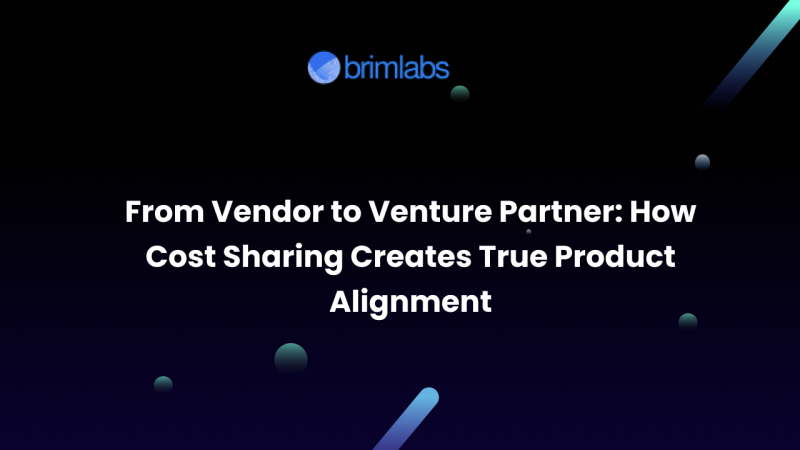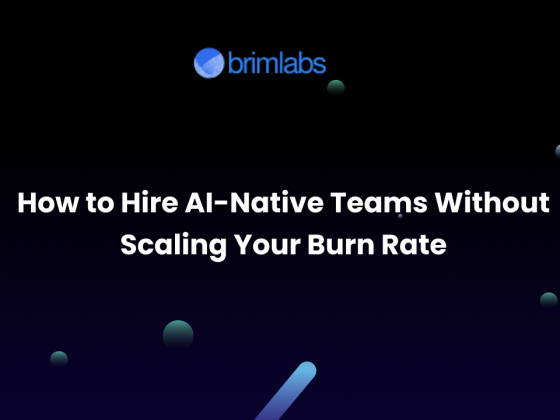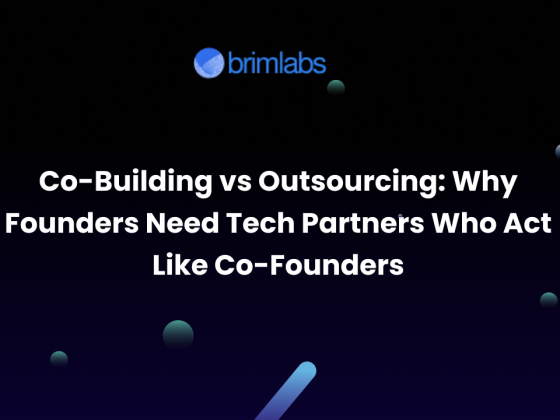For decades, the relationship between startups and software agencies has been transactional. A founder had a vision, hired a vendor, paid a fixed cost, and expected a product in return. The problem with that model was never the talent or the intent. It was the misalignment. The agency’s incentive was to deliver within budget and timeline, while the founder’s incentive was to create traction and value. When the invoices ended, so did the commitment.
But the landscape is changing. In a world where capital is expensive, markets are dynamic, and AI is redefining development velocity, the smartest founders are no longer looking for vendors. They are looking for venture partners. The bridge between the two is cost sharing, a model that transforms software development from a service into a shared journey of creation and value building.
This is the story of how cost sharing creates true product alignment.
The Problem with Traditional Vendor Relationships
The conventional agency model rewards completion, not outcome. The project is scoped, priced, and executed, often with rigid deliverables and limited flexibility. While this ensures predictability for both sides, it also introduces subtle but significant misalignments:
- Short-term focus: Vendors prioritize finishing the project, not iterating for product-market fit.
- Fixed costs, fluid vision: Founders refine ideas as they learn, but every change becomes a change request.
- Limited accountability: Once delivery is done, so is the ownership. The vendor moves on to the next client.
- No upside alignment: The vendor’s financial gain is capped, even if the product succeeds wildly.
The result? A product that’s technically complete but often strategically incomplete.
Enter Cost Sharing: Redefining the Relationship
Cost sharing reimagines the software development partnership by introducing a simple but powerful principle: both sides invest, both sides win.
Instead of a full cash engagement, the project is structured as a hybrid of cash plus equity, milestone-based revenue sharing, or deferred payments tied to product success. This means the agency contributes part of the cost as “skin in the game,” sharing both the risk and the upside.
At Brim Labs, for example, we’ve adopted multiple cost-sharing models from 60:40 or 70:30 cash-equity splits to SAFE-style engineering investments and outcome-linked milestones. The result is not just better economics for startups but a deeper, shared commitment to building something meaningful.
Why Cost Sharing Works
1. Aligned Incentives
When both parties have a stake in success, the focus shifts from deliverables to outcomes. The agency becomes a co-architect of growth, not a line item in the budget. Decisions about tech stack, features, or timelines are made based on long-term viability, not short-term savings.
2. Risk Mitigation for Startups
Early-stage founders often face the classic paradox: they need a strong product to raise funds, but they need funds to build the product. Cost sharing breaks this loop. By converting a portion of development cost into sweat equity or deferred billing, startups can move from idea to MVP faster without diluting excessive ownership upfront.
3. Higher Product Ownership for the Agency
Agencies that co-invest gain emotional and operational ownership in the product’s success. This creates a natural incentive to think beyond sprints and deadlines into scalability, UX quality, security, compliance, and future roadmap alignment. It transforms developers into strategic product thinkers.
4. Reduced Burn for Founders
Instead of paying the full development cost upfront, founders can channel capital into marketing, customer acquisition, or validation efforts. The engineering partner, in turn, builds a portfolio of ventures where long-term returns outweigh short-term revenue.
5. Shared Accountability
In cost-sharing partnerships, milestones are designed around measurable business outcomes, not just code pushes. This could include user acquisition goals, retention metrics, conversion rates, or successful funding rounds. When both parties tie their success to shared metrics, accountability deepens.
Models of Cost Sharing
There is no one-size-fits-all structure for cost sharing. The right model depends on stage, risk tolerance, and vision alignment. Some proven frameworks include:
1. Cash + Equity Hybrid
- Startup pays 50 to 70 percent in cash.
- Remaining portion is converted into equity or SAFE notes.
- Ideal for early-stage founders with limited capital but strong conviction.
2. Deferred Compensation
- Agency defers a percentage (usually 30 to 40 percent) of cost until post-launch or funding.
- Tied to specific milestones like user targets or revenue generation.
- Ideal for founders preparing for pre-seed or seed rounds.
3. Revenue Sharing
- Agency shares in early revenues, typically 5 to 10 percent.
- Aligns incentives around go-to-market performance.
4. Full Venture Co-Build
- Both sides co-own the IP and product from day one.
- Joint investment in design, engineering, and growth.
- Typically structured through a new entity with defined equity split.
At Brim Labs, we use a decision matrix to determine which model best suits each partnership – balancing vision, execution risk, and expected time to market.
How Cost Sharing Enhances Product Alignment
1. Vision Integration
When an agency becomes a co-builder, it deeply internalizes the founder’s mission. Discovery sprints evolve into shared workshops where both teams co-define the user journey, success metrics, and roadmap. Every feature becomes a business decision, not just a design choice.
2. Long-Term Thinking
Since the agency’s return depends on the product’s performance, they naturally prioritize scalability, maintainability, and modular design. Instead of shortcuts, you see better architecture decisions and documentation. The focus moves from “deliver it fast” to “deliver it right.”
3. Feedback-Driven Development
Agencies invest time in analytics, user testing, and post-launch optimization because success metrics directly impact their upside. This ensures continuous iteration and stronger product-market alignment.
4. Culture of Co-Ownership
Teams communicate like partners, not contractors. Daily standups are about growth strategy, not just bug tickets. The mindset changes from “build and bill” to “build and believe.”
The Financial Logic Behind It
Cost sharing is not charity. It’s a smarter capital allocation strategy for both sides.
- For Founders: Lower upfront costs, higher runway, faster MVP cycles.
- For Agencies: Diversified income streams, long-term equity upside, and stronger portfolio value.
If one in ten shared projects exits or scales successfully, the portfolio return can far exceed the combined margins of ten one-off service projects. This turns an agency from a service provider into a venture portfolio builder, a strategy that’s both scalable and sustainable in the AI-first product era.
Challenges and How to Mitigate Them
Cost sharing, while powerful, requires maturity and structure. Here’s how to make it work sustainably:
- Legal Clarity: Use simple SAFE or equity agreements. Define vesting, exit clauses, and IP ownership clearly.
- Transparency: Keep a shared dashboard for budget, burn, and milestones.
- Selective Partnership: Don’t apply cost sharing everywhere. Choose founders and ideas that demonstrate potential and commitment.
- Defined Exit Path: Clarify how and when the agency can realize returns via fundraising, revenue share, or acquisition.
Handled well, these guardrails turn cost sharing from an experiment into a replicable venture model.
The Future of Venture Partnerships
The next decade of product building will not be about who can code faster but who can align deeper. Startups will increasingly partner with agencies that act as venture studios blending execution excellence with strategic capital participation.
As AI reduces the cost of coding, the true differentiator becomes alignment, insight, and shared risk. Cost sharing unlocks all three. It creates a flywheel of trust, innovation, and accountability that fuels not just products but enduring partnerships.
Conclusion: Brim Labs’ Commitment to the Co-Build Future
At Brim Labs, we’ve built our entire model around this philosophy. We call it “From Vendor to Venture Partner”, a shift that redefines what it means to build together. Whether it’s a FinTech revolutionizing compliance or a HealthTech startup redefining patient care, our approach ensures that we win only when our partners win.
Cost sharing isn’t just a financial model. It’s a statement of belief that true alignment is built not on contracts, but on commitment.
That’s the future of product building. And it’s already here.





